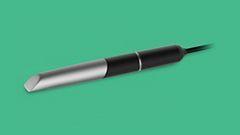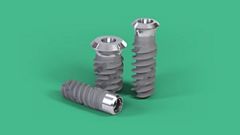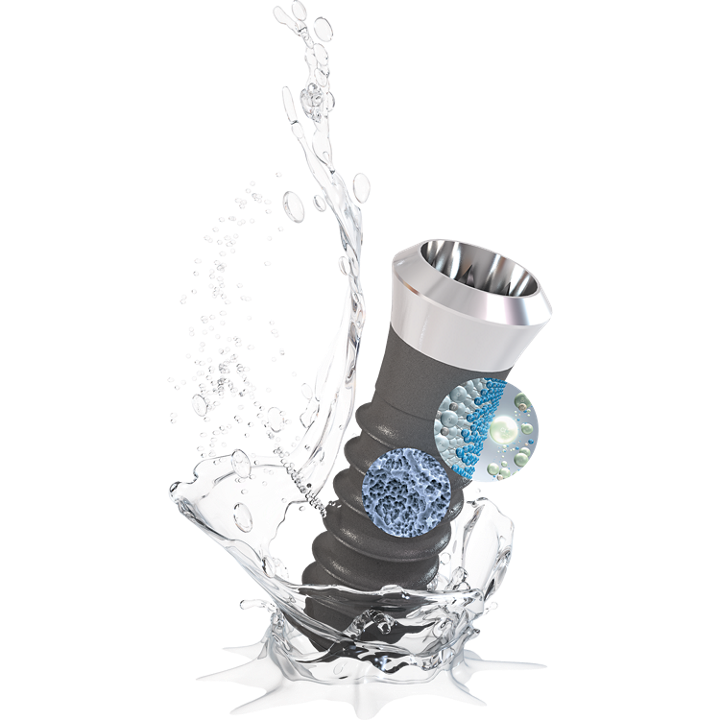
Redéfinir les limites de ce qui est possible.
De SLA®, la surface de référence dans le domaine, à la surface implantaire SLActive® haute performance, Straumann a toujours placé la barre plus haut pour établir de nouveaux standard dans l’ostéointégration. ZLA®, développé pour l’implant Straumann® PURE Ceramic, perpétue cette tradition.
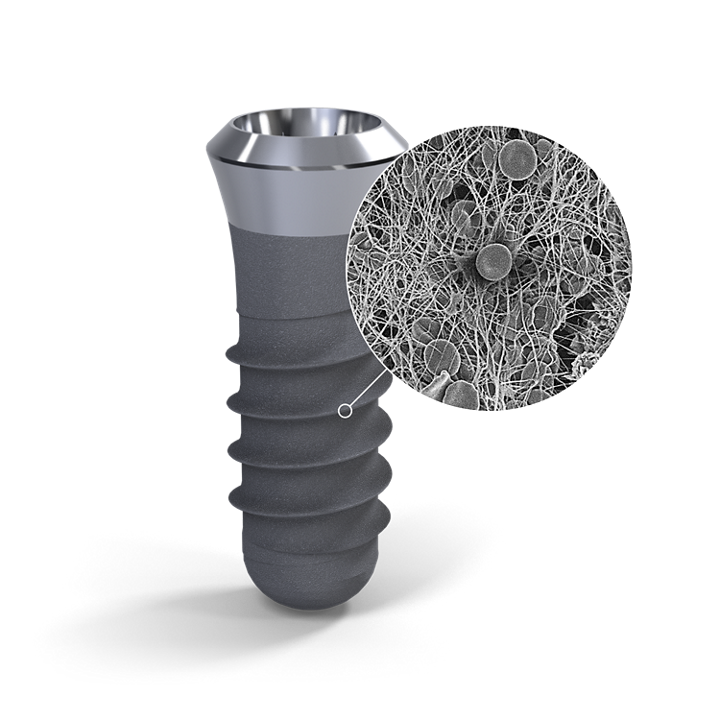
Images SEM sur le réseau de fibrine, image fournie avec l’aimable autorisation d’Empa, 2016
Straumann® SLActive®
Performance au-delà de l’imagination.
SLActive® est la surface haute performance de Straumann présentant un potentiel de cicatrisation important. Elle est caractérisée par une forte prédictibilité et une ostéointégration accélérée1-8. Des études récentes démontrent une excellente performance clinique des implants SLActive® même dans les protocoles de traitement les plus difficiles et chez des patients présentant des problèmes de santé.9-11
Cherchez-vous à obtenir plus d’informations ? Vous les trouverez dans le Centre de téléchargement.

Taux de survie des implants en mise en charge immédiate après 10 ans : 98,2 %.9

Temps de cicatrisation réduit passant de 6 à 8 semaines à 3 à 4 semaines dans toutes les indications.*

Meilleure génération osseuse même au niveau de sites compromis.12

Taux de survie des implants après 5 ans chez les patients irradiés présentant des lésions osseuses : 100 %.10,11
* par rapport à SLA®. Indications : d’un espace unitaire à une mâchoire édentée.
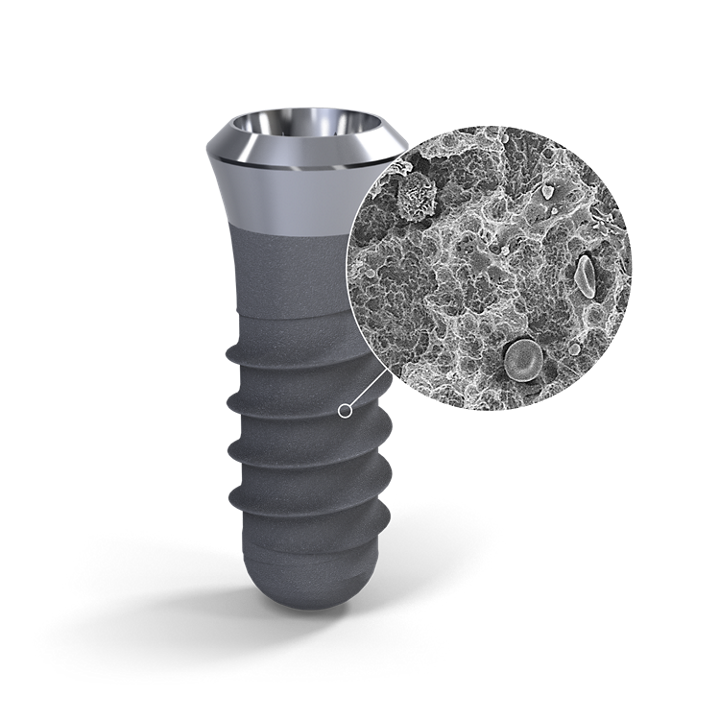
Images SEM sur le réseau de fibrine, image fournie avec l’aimable autorisation d’Empa, 2016
Straumann® SLA®
Longévité et efficacité dans la pratique quotidienne.
La surface classique SLA®, introduite en 1998, est basée sur une technique de sablage à gros grains qui génère une macro-rugosité sur la surface en titane. Ceci est suivi d’une attaque à l’acide qui superpose une micro-rugosité. La topographie résultante offre une structure idéale pour l’attachement cellulaire. De nombreuses études cliniques et précliniques évaluées par des pairs ont confirmé ses fortes performances à long terme et sa fiabilité, ce qui en fait l’une des surfaces les mieux documentées en implantologie dentaire. Selon une étude indépendante, l’odds ratio de développer une péri-implantite était plus de trois fois plus élevé chez les patients traités par des systèmes implantaires concurrents par rapport aux implants Straumann® avec la surface SLA®.13
Cherchez-vous à obtenir plus d’informations ? Vous les trouverez dans le Centre de téléchargement.

Taux de survie élevés et fiables entre 95,1 % et 98,8 % documentés par différentes études après 5 et 10 ans de suivi.14-20

Perte osseuse moyenne de 0,5-1 mm après 10 ans (valeurs initiales définies comme étant le moment de mise en charge de l’implant).15,16

Très faible prévalence de la péri-implantite (1,8 %) sur une période de 10 ans.15
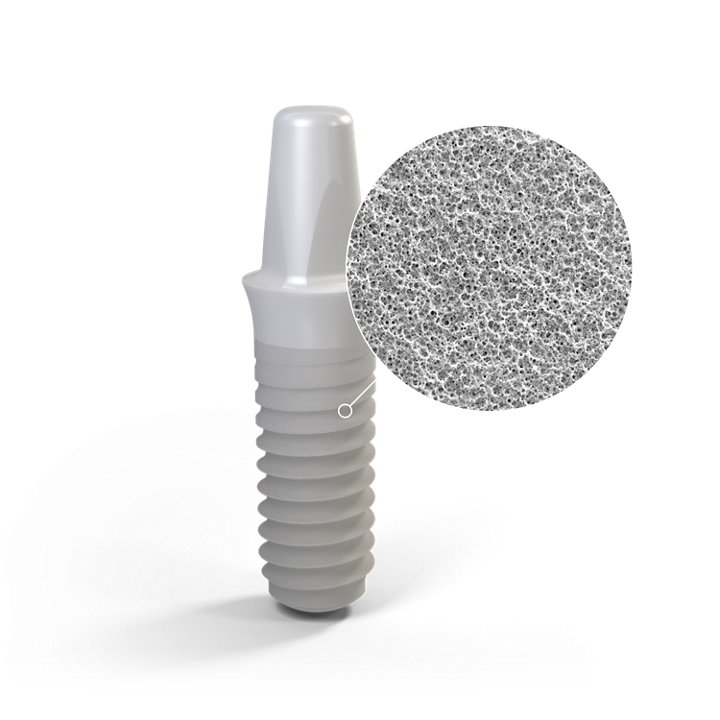
Straumann® ZLA®
Une surface avec des caractéristiques d’ostéointégration révolutionnaires.
Straumann® ZLA® est la surface du système implantaire Straumann® PURE Ceramic et présente des caractéristiques d’ostéointégration révolutionnaires qui sont équivalentes à la surface Straumann® SLA®.

Similaire à SLA® en termes de macro et micro rugosité.

Temps de cicatrisation comparable à celui de SLA®21-23

Fixation moins importante de la plaque – un facteur important pour la réussite à long terme de l’implant23.

